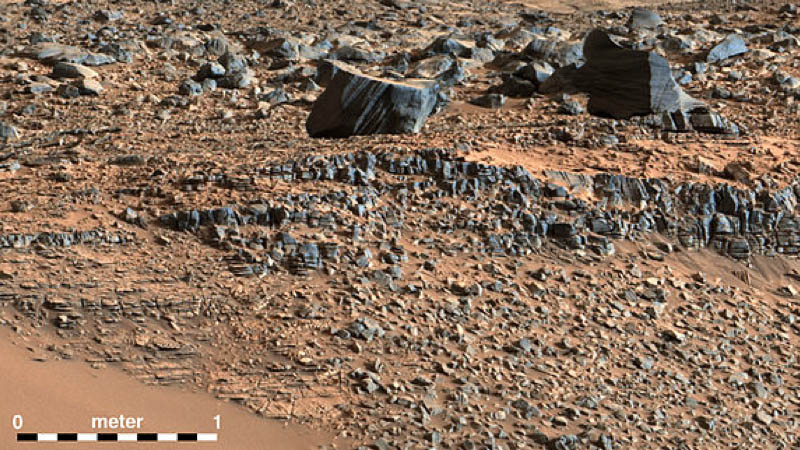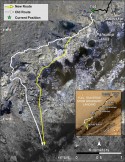
Over two years since landing on the gravely floor of Gale Crater on Mars, NASA’s Mars Science Laboratory rover, Curiosity, has reached the base of its primary mission goal, Mount Sharp: a 3-mile-high mound of sediment that preserves a geologic record of Mars going back billions of years.
“It is an exciting time and a huge milestone since we have finally arrived at the base of Mt. Sharp … the destination of the Curiosity rover,” says Dr. Paul Mahaffy, Principle Investigator of the Sample Analysis at Mars (SAM) team at NASA’s Goddard Space Flight Center. “There is plenty of evidence in our new site, named the Pahrump Hills, of flowing water, and the outcrops to be explored at this location is in a geological formation called the Murray Formation.”
Curiosity’s SAM instrument will heat samples of the outcrops to hundreds of degrees and analyze the gases released for signs of organic compounds that could have survived Mars’ harsh radiation environment, as well as other inorganic compounds. Sampling the chemistry of the lowest exposed layers of Mount Sharp, Curiosity will be reading from a page of Mars’ geologic history from the very distant past, and as the rover commences its true climb up the mountain’s slope through ever more recent layers of the past its primary mission activity is now beginning.
Why did it take Curiosity almost two years to reach the mountain it was sent to investigate? A person could have walked the distance from the landing site to its present location in an hour.
